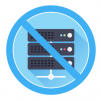 |
Measuring the Performance of Your Operations Center Many organizations have problems with consistently tracking and measuring system outages. Issues aren't logged, admins make changes to systems without going through change management, and a high number of issues turn out to be recurring problems. Implementing a performance measurement process calculates system reliability and can help you improve consistency. |
|
 |
Agile Is Not a Process, It’s a Mindset Agile transformation requires more than a change in process; it needs a change in mindset. In order to fully embrace agile and create a productive environment, you have to change how you think about priorities and failure. Priorities are decided proactively, not reactively, and failure is not punished, it is celebrated. Once you make this shift in perspective, you can reap the rewards of agile. |
|
 |
Applying Agile to Life: Taking Retrospectives outside the Workplace A lot of what agile teams do can be used effectively outside software development teams, and even outside the typical business organization. For instance, retrospectives and the practice of talking about what went well, what you should keep doing, and what can be improved can be applied anywhere—even to families. Read on to learn how to bring continuous improvement into your daily life. |
|
 |
3 Keys to Mastering Test-Driven Development From his decade of teaching thousands of professional software developers how to be effective with test-driven development, David Bernstein has learned that there are three key ingredients for mastering TDD: understanding what it really is, making code reliably testable, and getting hands-on experience. Let’s look at each of these factors to see what it takes to use TDD effectively on your projects. |
|
 |
The Modern Role of the Agile Business Analyst The business analyst (BA) has played a key role in software development. But within a modern agile context, the role of the BA is less clear, and there is some confusion as to whether the product owner role subsumes that of the traditional BA. Let’s look at the roles the BA can play with agile teams and how to fully leverage their expertise to supplement or augment that of the product owner. |
|
 |
Focus on Agile Engineering Methods in Your Digital Transformation Organizations undergoing a digital transformation must adopt new and meaningful ways of working. For a successful transformation, in addition to agile processes, teams must also leverage agile engineering techniques and models. Continuous focus on agile engineering principles will provide a solid ground for teams to enhance their agility and deliver better software, faster. |
|
 |
The Future of Agile Is Digital Agile software development is no longer about a better way to develop software. Agile is about changing the way digital technologies, products, and services are created to take advantage of enhanced CPU power and the tools that power has made possible. Here's how digitalization is reshaping agile teams, projects, and the very definition of success. |
|
 |
The Pros and Cons of a Serverless DevOps Solution The dream of any product owner is fully customizable production software without the expense of the hardware it rests upon. While not completely free of infrastructure, serverless infrastructure significantly reduces overhead costs by abstracting away physical hosting, physical security, server maintenance, and OS patching. Here's what you need to know to decide if serverless infrastructure is right for you. |
|
 |
What's in a Name? Build Better Software by Naming Classes and Methods Clearly One of the most important things to pay attention to when writing software is how we name our symbols. Data and behavior should be named in a way that represents the essence of what we're trying to do. Naming affects understandability and reflects code quality, so use names that clearly communicate your intentions, and refactor those names when your intentions change. |
|
 |
Living the Agile Principles: Customer Value The first principle of the Agile Manifesto states, "Our highest priority is to satisfy the customer through early and continuous delivery of valuable software." Early and frequent delivery gets value to customers quickly and helps you figure out whether you understand what your customers really want. Here are five tips for how you can follow the first agile principle and provide customer value continuously. |
Pages
Upcoming Events
| Apr 27 |
STAREAST Software Testing Conference in Orlando & Online |
| Jun 08 |
AI Con USA An Intelligence-Driven Future |
| Sep 21 |
STARWEST Software Testing Conference in Anaheim & Online |
| Oct 27 |
STARCANADA Software Testing Conference in Toronto |











